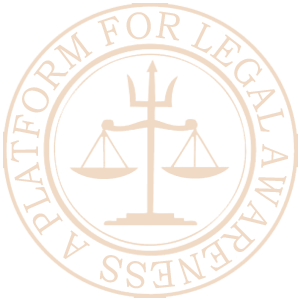Public Interest Litigations and Lawyering for the Fame Sake: A Practical Approach
Prof(Dr) Debarati Halder*
& Nihal Kumar **
During and post-cold war in the 1960s United States of America went through unforeseen socio-economic conditions. People from marginalized communities, women, children and old people became the worst victims of poverty, hunger and social insecurity in every sense. White supremacy created racial discrimination: people of colour were denied basic rights, including the right to food, shelter, education etc. This encouraged some public-spirited activists to follow the pursuits of Louis Brandels, a lawyer by profession who went on to become an associate justice in the Supreme Court of the USA. In 1905 Brandels, in his speech, emphasized extending legal help on a pro bono basis to the needy, thereby creating the concept of litigation for the public's interest. After this, it did not take much time for the world to accept the concept of public interest litigation. Lawyers from many countries across the world started appearing for the cause of the public (especially those who would not be able to access justice due to socio-economic margination, social oppression, and abuse of power by the authorities and women and children who had almost nil voice). Courts gave priority in almost all such cases as these consumers of justices would not be able to survive if they were not heard.
India is no exception. With Justice V. R. Krishna Iyer in Mumbai Kamgar Sabha Vs Abdul Thai, AIR 1976, SCC 832 and Justice P.N. Bhagwati in Hussainara Khatoon vs Home Secretary, State Of Bihar & others 1979 AIR 1369, 1979 SCR (3) 532, a new dimension in litigation for public interest was started in India. The courts in India had established a remarkable landmark in judicial activism to accommodate the need for bonded labourers, children in need of care and protection and children in conflict with the law, especially those who may be sandwiched between the category of a child in conflict with law and child in need of care and protection, protection of women, rights of disabled people, senior citizens, people from socio-economically backward classes and environmental issues etc. Nonetheless, access to justice became easy, and it made the courts understand different types of right exploitation, the evolution of different types of rights and the use, misuse and abuse of different types of rights.
If one researches the history and evolution of public interest litigations over the period, existing literature would suggest that there was a gradual phase-wise development of this concept. The first phase starting from the 1970s, was dedicated to the welfare of the underprivileged communities of the society, including women and children, disabled people etc. Strangely, this phase did not address the issues of transgender people that we would get to see in the third phase in post-millennium. The second phase was more focused on public issues at large, including environmental issues, workplace safety issues, transparency in the governance, police brutality-related issues etc. The millennium opened the flood gate of more right explosions touching the issues of children, minority people and new technology. This brought the third phase of public interest litigations in India. The 2004 ghastly Kumbhakonam school fire incidence is again a turning point where judicial activism laid down strict rules for maintaining school infrastructure for the safety of children. In this phase, we also get to see historical judgments on the rights of transgender people, privacy rights, and speech rights, especially that of women (for example, actor Khusboo's statement on the issue of virginity of women in S. Khusboo vs Kaniammal (2010) 5SCC), right to access the internet, pornography and its legality with children and adults etc.
This third phase also encouraged many private stakeholders to seek the channels of public interest litigation mainly to achieve public attention. Khusboo's case is one example. But what concerns us is that even though the Supreme Court of India time and again has laid down strict guidelines for restricting the use of public interest litigations, many stakeholders have neglected the same. The recent case of Z security cover of business tycoon Mukesh Ambani and his family is yet another example: the case, in the nature of public interest litigation, prayed for discontinuation of the government security provided to the Ambani family because apparently, the family in question was financially empowered to arrange for private security. The Supreme Court refused to entertain the prayer as it was shown by the defendants that Ambanis had been providing the cost as per the conditions for availing such security.
Is there any way to stop this, especially to make public interest lawyering more focused only on public benefits at large? The answer lies in strengthening the legal education system for public interest lawyering, especially for undergraduate and LLM students of law. Students must be made aware of the constitutional rights and legal provisions that discuss the locus standi of right activists. Moot courts and client counselling competitions can be of great help to make students learn about this. Students must learn how to segregate between private and public interest litigations and how not to waste the precious time of the courts to achieve professional fame. All legal professionals must remember that being in the noble profession, fame will not come by filing cases on frivolous grounds. This will rather damage the reputation of the lawyers/practitioners. A good lawyer must follow the rules to serve the public, and fame will be showered as blessings.
About the authors-
* Prof(Dr). Debarati Halder, LL.B, LL.M(International & Constitutional Law), LL.M(Criminal & Security Law), PhD (Law)(NLSIU, Bangalore) is working as a Professor of Law at Parul Institute of Law, Vadodara, Gujarat.
She is 2022 EqualityNow Public Voices Fellow
(https://www.equalitynow.org/news_and_insights/public-voices-fellowship-on-advancing-the-rights-of-women-and-girls/). More about her can be found @https://internetlegalstudies.com/. She can be reached @profdebarati@gmail.com.
** Nihal Kumar is pursuing LLB 3rd Semester at Parul Institute of Law, Parul University, Vadodara, Gujarat.
Disclaimer: Kindly note that the views and opinions expressed are of the author(s), not Law Colloquy.

